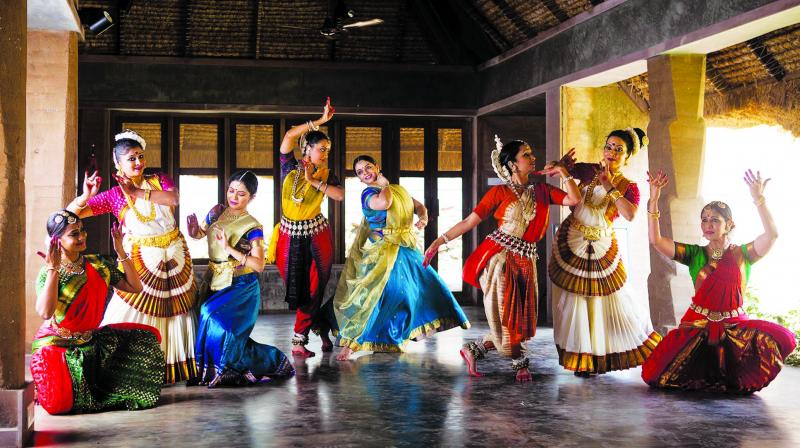The Divine Dance: Unveiling the Cosmic Symbolism of Tandava and Lasya
In the intricate tapestry of Hindu mythology and spirituality, the dance of the divine plays a captivating role. Among the various dance forms, two stand out prominently - Tandava and Lasya. These cosmic dances, performed by different deities, embody profound symbolism and represent distinct facets of the universe. Let's explore the origins and significance of Tandava and Lasya, unraveling the cosmic dance of creation, destruction, and harmony.
Tandava: The Dance of Cosmic Energy
Tandava, a powerful and vigorous dance form, is attributed to Lord Shiva - the God of Destruction and Transformation. This dynamic dance portrays Shiva's cosmic role as the annihilator and regenerator of the universe. Tandava is often associated with fierce energy and raw power, symbolizing the cyclical nature of creation, preservation, and dissolution. Its movements encompass various forms - Ananda Tandava (the dance of bliss), Tripura Tandava (the dance of three cities), and Sandhya Tandava (the dance during twilight). The dance's rhythmic steps and gestures represent the eternal flow of time, where creation emerges from chaos and ultimately merges back into it. Tandava also exemplifies the interconnectedness of life, death, and rebirth, inviting seekers to embrace change and transformation as inherent aspects of existence.
Lasya: The Dance of Grace and Beauty
Lasya, in contrast to the powerful Tandava, embodies grace, delicacy, and elegance. It is performed by Goddess Parvati, the consort of Lord Shiva, and represents the divine feminine energy. Lasya is further divided into two forms - Ananda Lasya and Bhava Lasya. Ananda Lasya portrays the joyful aspects of creation and celebrates the beauty of existence, while Bhava Lasya expresses the myriad emotions that traverse the human experience. This dance form symbolizes the nurturing and compassionate qualities of the goddess and signifies the harmonious balance between masculine and feminine energies in the cosmos. Lasya's gentle movements and expressions reflect the interconnectedness of all beings and the rhythm of life's cycles.
Origins and Cosmic Harmony
The origins of Tandava and Lasya trace back to ancient scriptures, particularly the Natya Shastra attributed to the sage Bharata. This treatise on performing arts provides insights into the nuances of various dance forms and their spiritual significance. The cosmic dance of Tandava and Lasya not only enlivens mythological narratives but also reflects the intricate interplay of cosmic forces and energies. Together, they depict the cosmic balance between destruction and creation, chaos and order, power and grace.
In essence, Tandava and Lasya offer a glimpse into the multifaceted nature of divinity and the universe. They remind us of the eternal dance of cosmic energies that shape our world and invite us to harmonize our lives with these primal rhythms. Through Tandava and Lasya, we are invited to explore the intricate choreography of existence, embrace both the fierce and tender aspects of reality, and find our place within the grand cosmic symphony.

